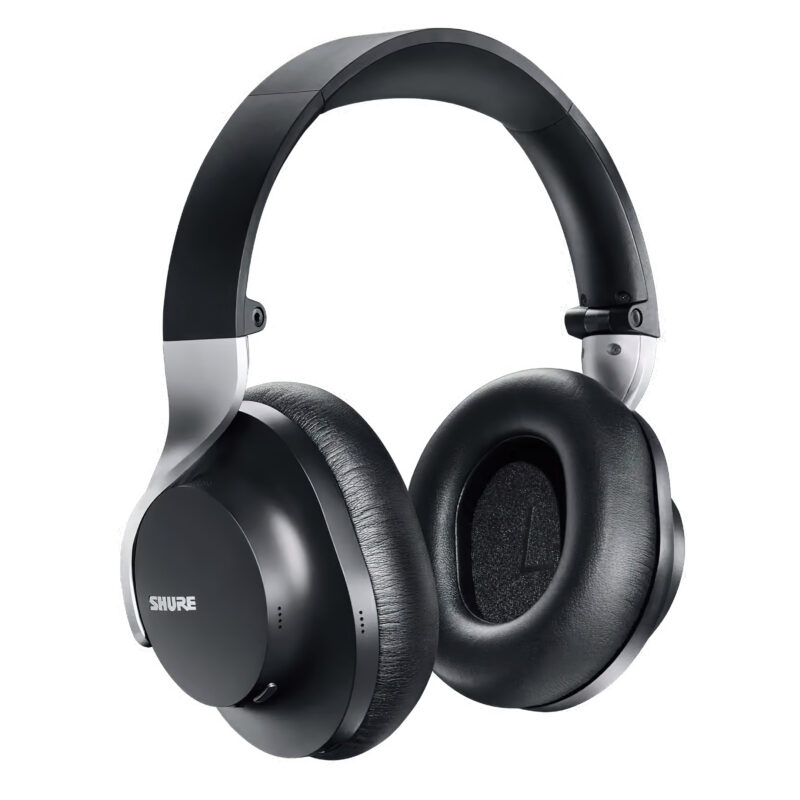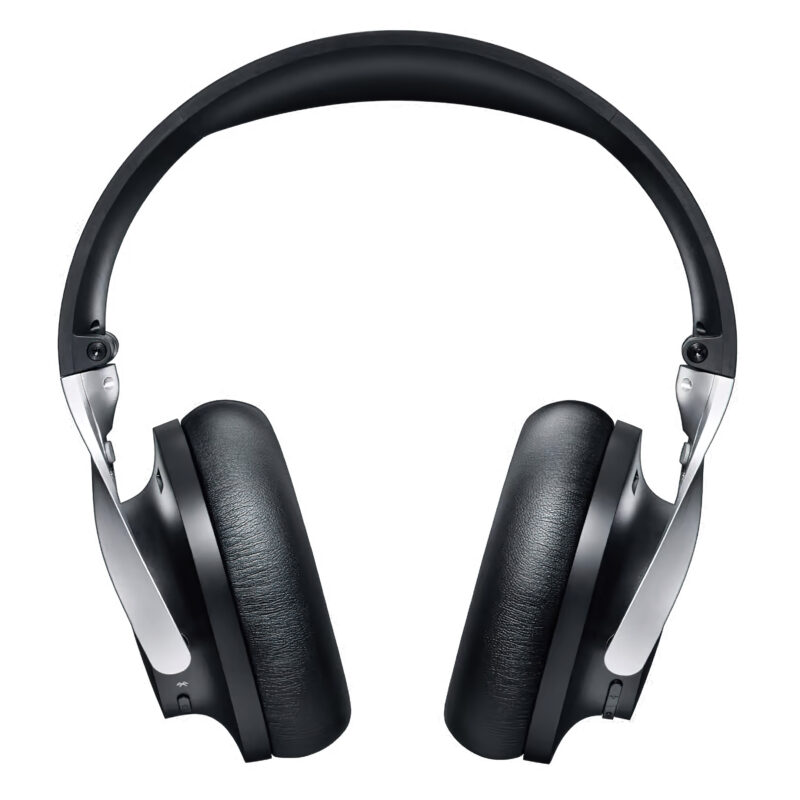When Shure launched their first noise-cancelling headphones, the Aonic 50, I was more than excited. Superb sound quality, EQ in the app and great fit. The noise reduction was only so-so, but it did what it was supposed to. Shure had simply nailed it on the first try!
What I missed most was the ability to fold them up. They also couldn’t be voice controlled, but I personally don’t really care about that.
Some probably also thought the Aonic 50 was too expensive. And while they did a lot of things really well, the fact that they couldn’t be fast-charged dragged them down.
With the new Aonic 40s, Shure has addressed more of these things, and the headphones actually come across as more complete than their big brother. They now fold up, and they’re more compact. If you have a USB-C fast charger, you also get five hours of playback from 15 minutes of charging. Not bad! And like its big brother, the Aonic 40 supports multipoint connectivity for two devices at once.
To reduce the size, the drivers have been shrunk from 50 to 40 mm. On the other hand, battery life has been increased from 20 to 25 hours.
Whereas the Aonic 50 is aimed at hi-fi enthusiasts thanks to Sony’s LDAC codec, which provides the best sound via Bluetooth, the Aonic 40 makes do with aptX HD. Fair enough.
Fit and ease of use
While the Aonic 50 fits like a dream around the ears, I find the Aonic 40 a bit more squeezing. This is especially noticeable when I put on reading glasses, which can easily become uncomfortable. The ear pads are both thinner and harder than on the big brother.
Another thing I notice is that the bass reproduction deteriorates when wearing glasses, as the pads don’t seal as well. If you wear glasses, I would therefore recommend choosing the Aonic 50 – or something completely different.
As for ease of use, the headphones have buttons instead of swipe function. And since several of the buttons have different functions depending on how many times they’re pressed and how long they’re held down, there’s a long list in the app (ShurePlus Play) of how to perform the various functions.
Personally, I find all the functions on the headphones a hassle, so I usually use my phone to control most things.

Noise reduction and call quality
Noise reduction and ambient sound can be set in several steps; personally, I prefer to have them both at maximum when in use. The sound of music playing is not much different with both features turned off than with either of them on. But as usual, music sounds more dynamic and better controlled with them turned off.
During testing, the app occasionally lost contact with the headphones, especially if I moved outside the phone’s coverage and came back in. Bluetooth returned and the music played, but the app didn’t find the headphones so I could make settings.
If you use the Aonic 40 for mobile calls and digital meetings, the receiver hears you just fine. My voice comes through clearer and more distinctly to the receiver than with, say, the Sony WH-1000XM4; Shure is pretty far up the list here.
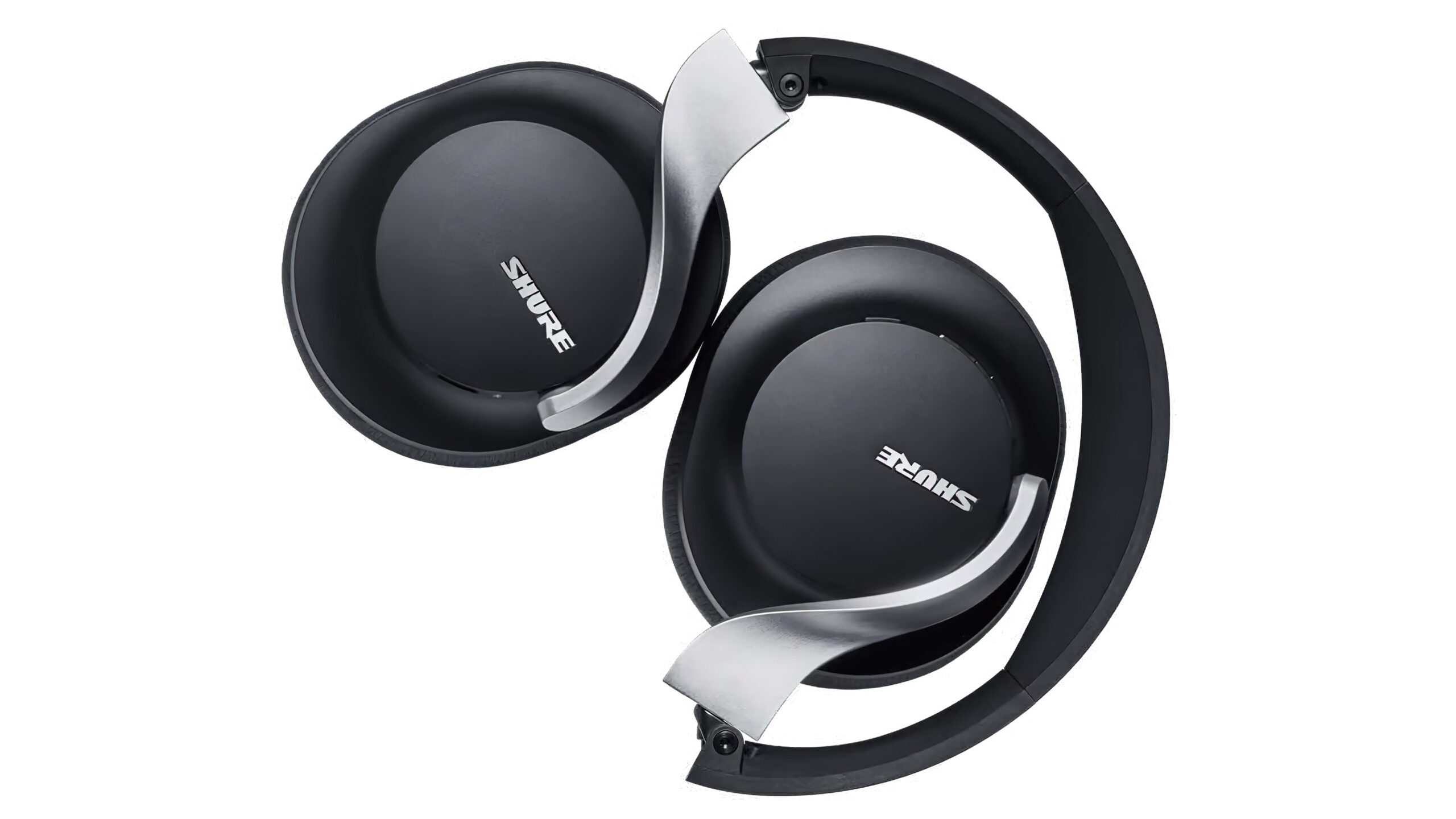
The sound of Shure Aonic 40
The Aonic 40 sounds very clean and nice, and the music comes through credibly. There’s no exaggerated bass here, but what bass there is is well controlled and follows the rhythms well.
Father John Misty’s guitar rings out clearly on the country ballad “Goodbye Mr. Blue,” and the overtones especially jangle well on the tapes. The electric bass is not the finest, but sounds real and lifelike. Father John’s voice is also clear; it just lacks a little volume in the middle register compared to his big brother.
Cody Fry’s orchestral version of the Beatles’ “Eleanor Rigby” is rendered with fine air in the violins, and there is little to complain about in the bass section. Again, I would like a little more midrange to get more going on in the horn section and to bring out Cody’s voice better.
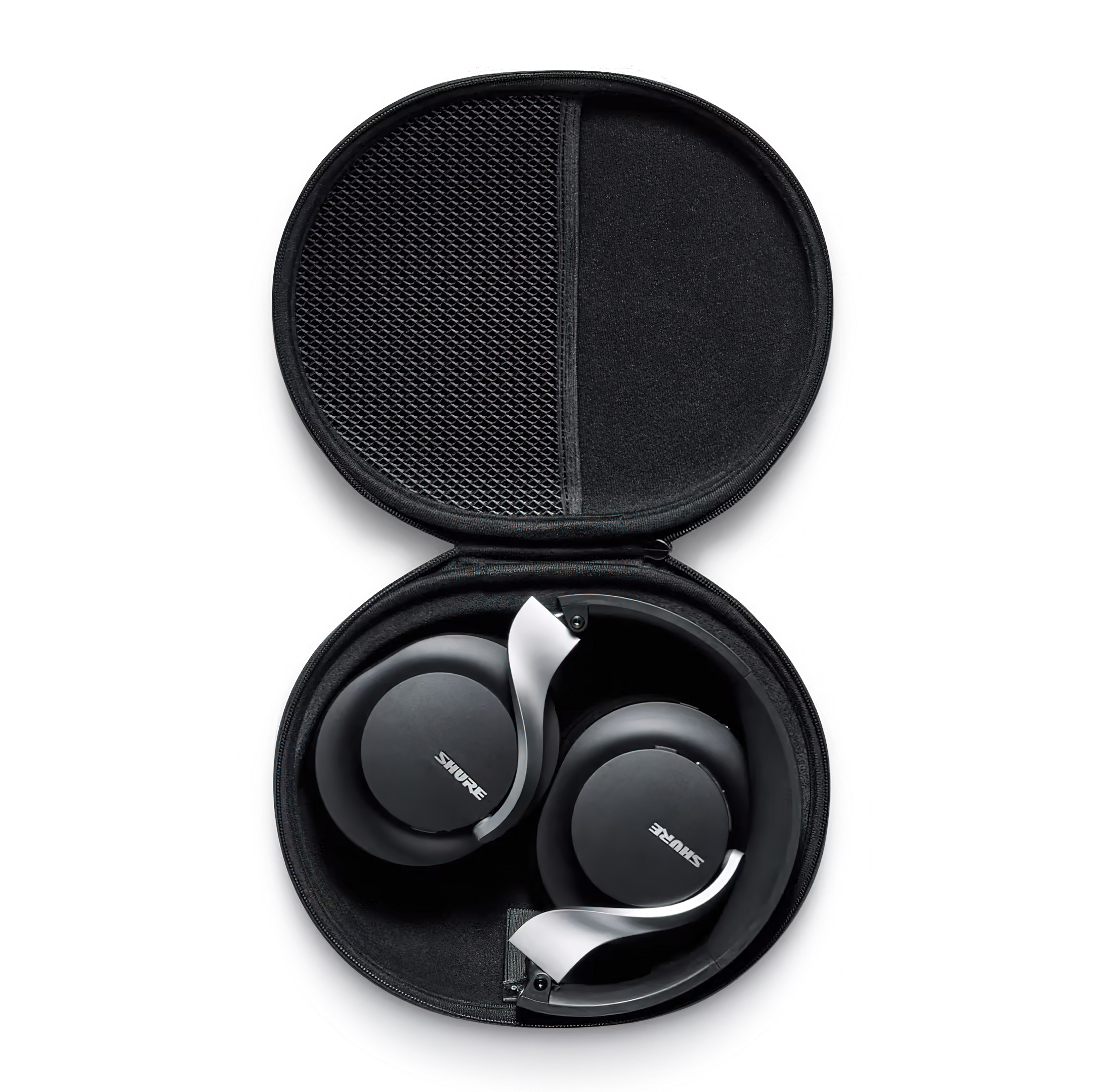
Equalizing
Fortunately, there’s an equalizer in the app. With both preset tonal balances and a four-band parametric EQ. It may not sound that advanced, but you can actually set four selectable frequencies along the entire frequency range and set the bandwidth (Q value) from 0.8 to 4 octaves. In other words, you can choose how wide a frequency range to adjust.
I’m pretty happy with the sound before adjustment, but it gets even better with a trim on the EQ To bring out a bit more midrange and also mute the sibilants a bit.
Some recordings have a bit harsh cymbals and sibilants (s and sj sounds), and it gets worse if you increase the midrange without compensating elsewhere. In this case the sharp area around 6 kHz. And now that we’re manipulating, I’m boosting the bass a bit, just to make things a bit more fun.
I ended up with the following:
- 1 (Low Shelf): 100 Hz, +3 dB, 0.8 octaves
- 2 (parametric): 1000 Hz, +4 dB, 4 octaves
- 3 (parametric): 6300 Hz, -3 dB, 1 octave
- 4 (High Shelf): 10,000 Hz, +3 dB, 3 octaves
And it helped! Now Father John Misty’s voice is suddenly much more prominent, while the guitar has a clearer sound.
The dirty, industrial-inspired track “Die For You” with Valorant and guest vocals by Grabbitz sounds hard as nails with vocals way out in front, deep bass and an arpeggio that drills into the ear canal in the most delicious way. This is awesome!
With the tone settings I just gave you, I really can’t think of anything better for the price. It’s a real pleasure to listen to music now. The music is clear, dynamic and dramatic. It doesn’t sound sharp at all, but still very detailed and distinct. It’s not much big brother has to trump now!
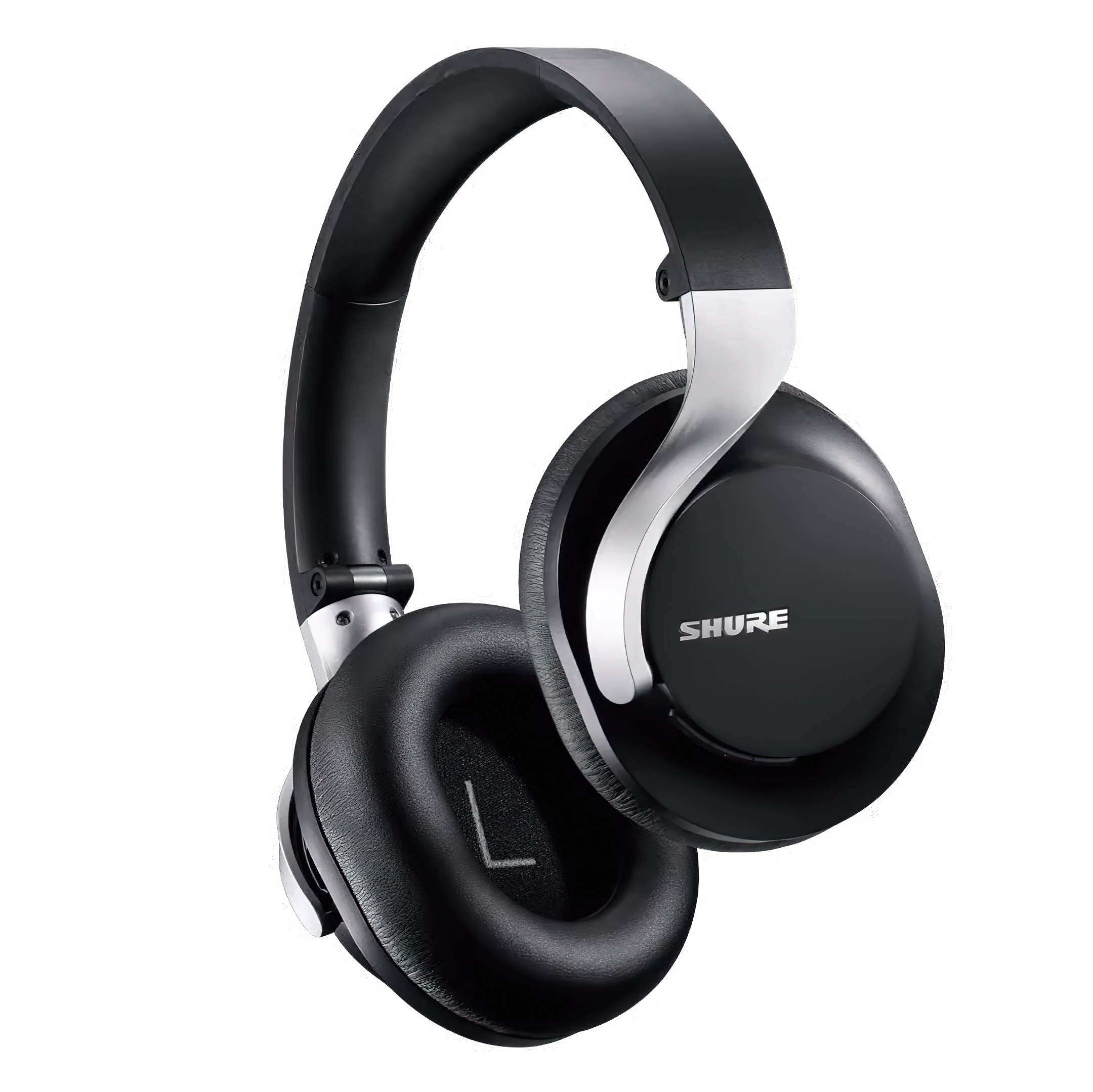
Competitors
In this price range, the Aonic 40 is not without competition. You can make the JBL Tour One sound almost as good with the EQ, but they don’t sound very good without settings. If you don’t like tinkering with an EQ, the Aonic 40 sounds much better. On the other hand, the JBLs will probably work better for people with glasses, as they have softer ear pads.
The Yamaha YH-E700A has even fatter sound, though some might say the bass is a bit overdone (but not I). However, the Yamaha has worse noise cancellation than the Shure, and you can’t adjust the sound on them.
The Sony WH-1000XM4 has been on the market for a while now and has therefore dropped in price – about where you find the Aonic 40. The Sony’s are superior on noise reduction, but I have not managed to get them to sound as good as the Aonic 40.
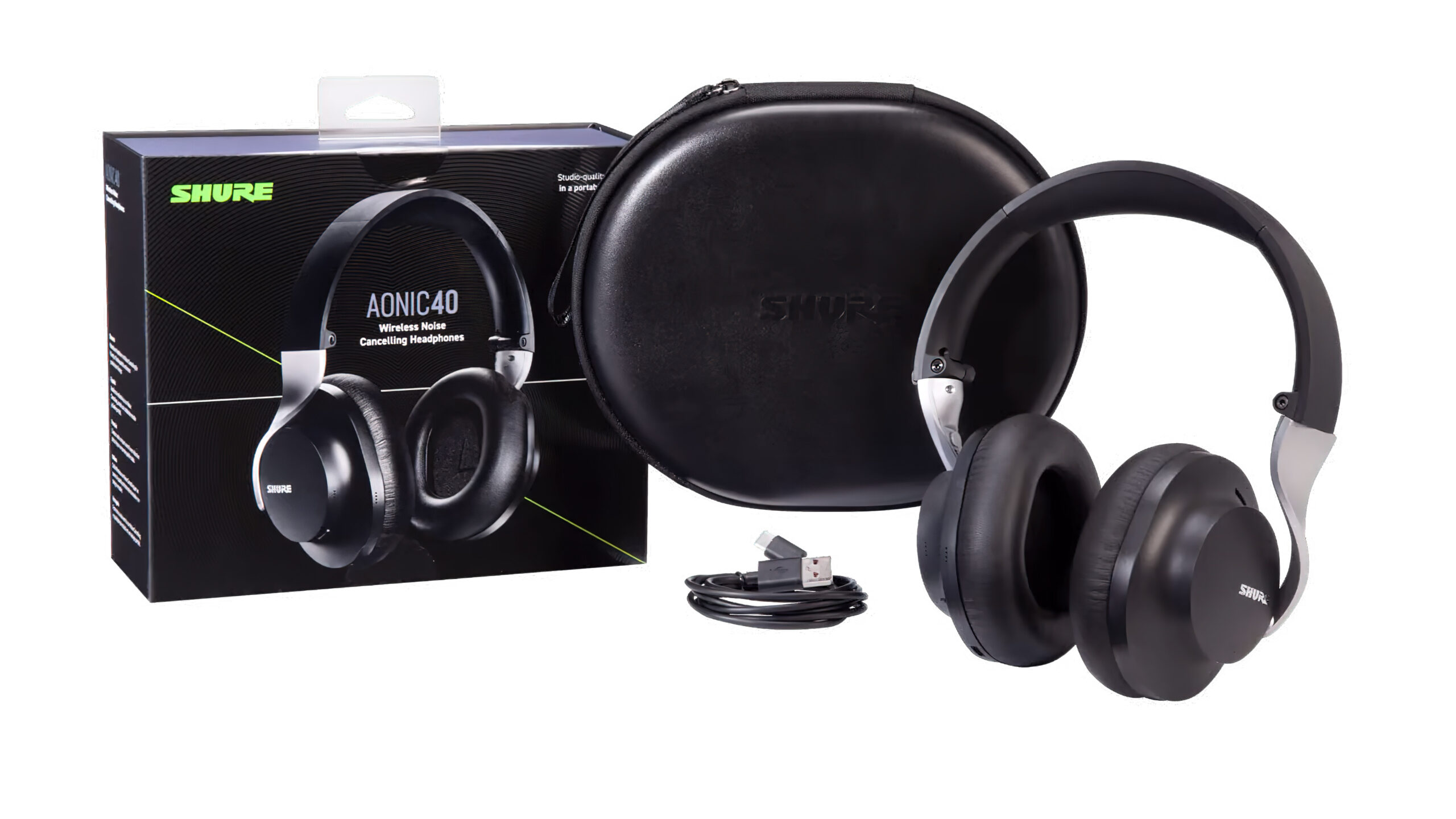
Conclusion
Shure’s cheapest noise-cancelling headphones have some improvements over the top model, including the fact that they fold up and can finally be fast-charged.
Usability is good, but the fit is slightly degraded by the harder ear pads. They should have been either thicker or softer, and glasses users will also find that the bass leaks out.
If you don’t wear glasses, on the other hand, just enjoy the sound quality from the Aonic 40. They sound great right out of the box, and you can make them sound even better with the EQ in the app.
Noise reduction is just fine, as is call quality.

We think
Very clear and fine sound, good dynamics and nice range. Good noise reduction and - finally - fast charging. The app is not always stable. Not as comfortable on the ears as big brother, and spectacle users lose bass response.
249 €
Specifications
- Type: on-ear, closed, wireless
- Drivers: 40 mm
- Frequency range: 20 Hz – 20 kHz
- Active noise cancellation: Yes
- Ambient mode: Yes
- Battery life: Up to 25 hours
- Water resistance: No
- Voice control: No
- App: ShurePlus Play
- Connections: Bluetooth 5 (SBC, AAC, aptX HD), 3.5 mm analog
- Charging: USB-C (quick charge 5 hours in 15 min.)
- Weight: 313 g
- Colours: black, white
- Web: shure.com


